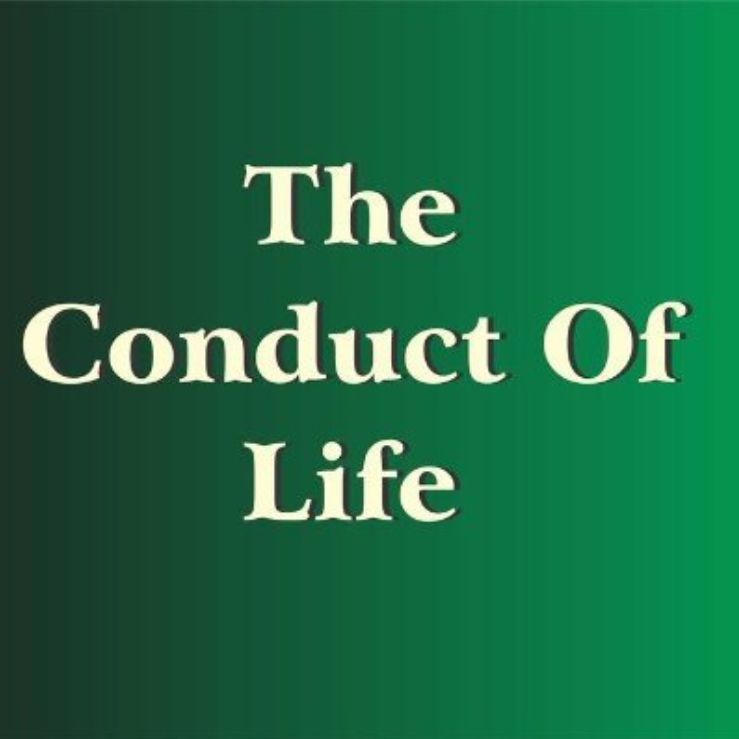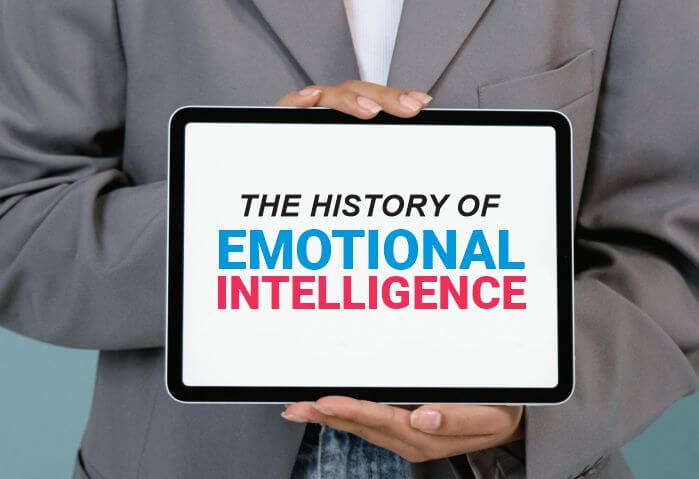Last updated on April 25th, 2025 at 02:53 am
Emotional smartness has become increasingly important in personal and professional relationships for decades. Here is everything you need to know about the origin and history of emotional intelligence.
But where did the concept of EI come from? Let’s explore the rich history of emotional intelligence.
Emotional intelligence, also known as EI or EQ, is the ability to recognize, understand, and manage one’s own emotions, as well as other people’s emotions around them.
The components that make up emotional intelligence were first discussed under social intelligence by psychologists.
The term ‘emotional intelligence’ was later combined with social intelligence to form the all-inclusive ‘Emotional and Social Intelligence.
Social intelligence in the history of emotional intelligence
The term ‘social intelligence’ was first mentioned by John Dewey, a philosopher in Education in 1909 before Edward Thorndike 1920 used the term in his book ‘Intelligence and its uses’ in a monthly magazine.
The book described the ability to understand and manage men and women and to act with wisdom in human relations.
In the 1920s, researchers began to study how people handle and regulate their emotions. For example, psychologist Edward Thorndike identified “social intelligence” as the ability to understand and manage other people’s emotions, and this term was later expanded to “emotional intelligence” by psychologist John Mayer in the 1990s.
Emotional intelligence gains traction

However, it was in the 1960s that the topic really gained traction. Psychologists James Gibson and Richard Lazarus argued that emotions play a critical role in how people interact with the world, and how they respond to stimuli around them.
In the 1940s, David Wechsler identified the presence and effect of many factors on intelligent behaviour and posited that before all the models of intelligence could be complete, all factors were to be discovered.
However, the first mention of the term ‘emotional intelligence’ was by Michael Beldoch, a Professor of Clinical Psychology at Cornell University in 1964 in his research paper ‘Sensitivity to Expression of Emotional Meaning in Three Modes of Communication.
Related: How to Develop Emotional Intelligence
It also appeared in the book of a German psychiatrist Hanscarl Leuner in 1966 titled ‘Emotional Intelligence and Emancipation’.
In 1983, Howard Gardner worked on the theory of multiple intelligences in his book ‘Frames of Mind’ which was a sequel to ‘The Shattered Mind’. The Shattered Mind was a book he conceptualized in 1975.
In his book, Gardner described two ‘personal intelligence’ that exactly aligned with the scopes of ‘Emotional and Social Intelligence’. They are:
- Intrapersonal intelligence – the ability to access and make use of one’s own feelings
- Interpersonal intelligence – the ability to notice and make distinctions about the moods, temperaments, and intentions of others.
Emotional intelligence also appeared in an unpublished dissertation of a researcher, Wayne Payne ‘A Study of Emotion: Developing Emotional Intelligence – Self-integration, Relating to Fear, Pain, and Desire.
However, another important turn happened in 1987 with the article of Keith Beasley in the magazine, Mensa where EQ (Emotional Quotient) was first used.
John Mayer, a professor at the University of New Hampshire, and Peter Salovey at Yale came up with their article on Emotional Intelligence.
This was the first time the term was given important academic attention as the focus was on abilities rather than traits.
Related: 15 Phrases That Make You Emotionally Smart
John Mayer and Peter Salovey’s contribution
In the 1980s, the movement for emotional intelligence gained momentum thanks to the work of psychologists Peter Salovey and John Mayer, who published a paper on the topic in 1990.
They defined emotional intelligence as “the ability to monitor one’s own and other’s feelings and emotions, to discriminate among them, and to use this information to guide one’s thinking and actions.”
Salovey and Mayer also developed the now-common concept of EI as a set of four skills: perceiving, using, understanding, and managing emotions.
Popularization of emotional intelligence by Daniel Goleman
The ground-shattering work of Daniel Goleman in the 1990s took the subject to the next level.
Though his work was based on the works of previous researchers, especially Mayer and Salovey, he was granted permission to borrow their models for the book Emotional Intelligence: Why It Can Matter More Than IQ.
See more on the emotional intelligence book.
His book took the corporate world by storm and laymen alike. It became a bestseller and played the biggest role in popularizing the concept.
Emotional Intelligence has self-awareness and self-management as its components and Social Intelligence has social smartness and management or relationship as its components.
It was a great side-by-side transition of all the components that hitherto were elusive and ungraspable.
Goleman’s book has sold over 5 million copies worldwide and has been translated into over 40 languages.
His other work, ‘Social Intelligence – The New Science of Human Relationships’ in 2006 added more insight into the subject.
He divided the earlier four components into two branches.
The concept of emotional intelligence has continued to help people understand themselves, and others to become better people in society.
Today, emotional intelligence is a widely studied and applied concept, with many individuals and organizations investing in training and development programs.
It has been linked not only to better relationships but also to improved mental health, job performance, and leadership skills.
The history and development of EI highlight the importance of emotional competence in our daily lives and the need for further research and application in this field.
Frequently asked questions about emotional intelligence
Who is the founder of emotional intelligence?
The concept of emotional intelligence (EI) was introduced by psychologists Peter Salovey and John D. Mayer in the early 1990s.
However, it was popularized by the American psychologist and author Daniel Goleman, who wrote the best-selling book “Emotional Intelligence” in 1995.
Goleman’s book helped to bring the concept of emotional intelligence to a wider audience and sparked interest in its practical applications in personal and professional settings.
While Salovey and Mayer are credited with developing the theoretical framework of emotional intelligence, Goleman’s work has made the concept more accessible and popular.
How did Daniel Goleman come up with emotional intelligence?
Daniel Goleman is a psychologist and science journalist who popularized the concept of emotional intelligence (EI) in his 1995 book “Emotional Intelligence: Why It Can Matter More Than IQ.”
However, the concept of emotional intelligence has its roots in the work of several researchers, including Howard Gardner, Peter Salovey, and John Mayer, who were studying social and emotional abilities in the early 1990s.
Goleman drew on this research, as well as his own experience as a science journalist reporting on psychology and neuroscience, to develop his theory of emotional intelligence.
He defined emotional intelligence as the ability to recognize and understand one’s own emotions, as well as the emotions of others, and to use this knowledge to guide thought and behavior.
Related: The Psychology of Emotions: How Emotions Shape Thoughts and Behaviours
Conclusion
In conclusion, the history of emotional intelligence shows how the concept has evolved and developed over time.
From early studies on how people regulate their emotions to the popularization of the idea by authors like Goleman, EI is now recognized as a critical component of personal and professional success.
As we continue to grow and learn in this area, it’s clear that developing emotional intelligence will continue to be a valuable skill for individuals and organizations alike.
References:
- The History Of Emotional Intelligence
- A Historical Overview Of Emotional Intelligence
- Daniel Goleman Explains The History Of Emotional Intelligence
Pious Clements is the insightful voice behind "The Conducts of Life" blog, where he writes about life ethics, self-development, life mastery, and the dynamics of people and society.
With a profound understanding of human behaviuor and societal dynamics, Pious offers thought-provoking perspectives on ethical living and personal growth.
Through engaging narratives and astute observations, he inspires readers to navigate life's complexities with wisdom and integrity, encouraging a deeper understanding of the human experience and our place within society.

